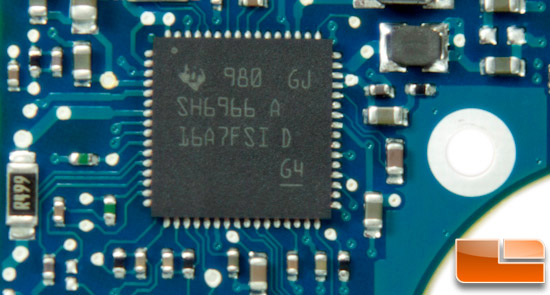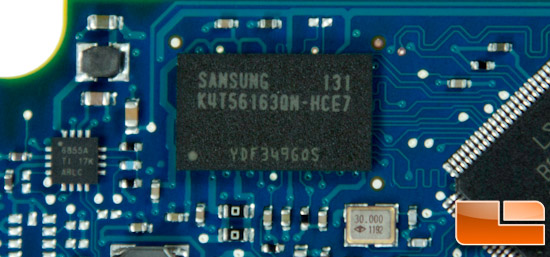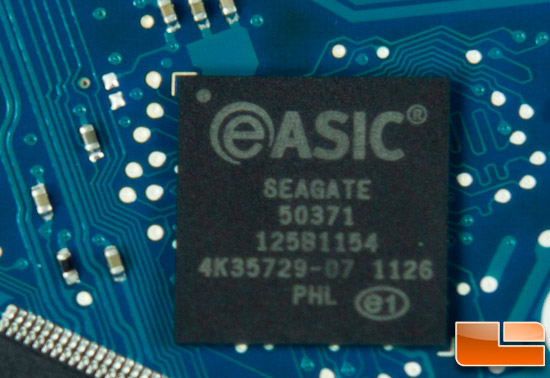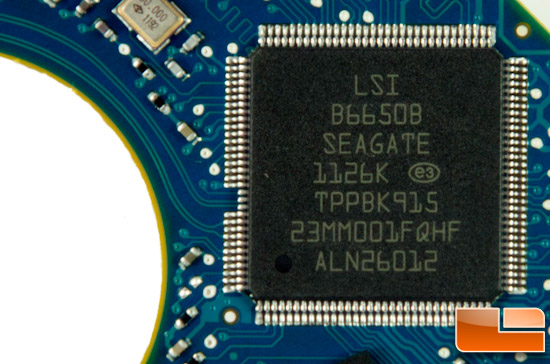Seagate Momentus XT 750GB Hybrid Drive Review (ST750LX003)
Momentus XT – A Closer Look
Taking apart hard drives are a bit more challenging than SSDs with more screws and most of the guts require a literal clean room as even a speck of dust can wreak havoc on the drive. As such, we’ll only be looking at the solid state components here.

The PCB has an array of components; some of which are not present on more conventional hard drives.

Just as we saw with the 500GB Momentus XT, the newer XT features the Texas Instruments SH6966 motor controller device chip.

A change from the 500GB XT drive, the 750GB XT drive has a larger and faster Samsung K4T56163QN-HCE7 DDR3 DRAM cache which is 256Mb (32MB) in capacity.

When we looked at the 500GB XT drive, we noted that eASIC is a fabless semiconductor company that offers ASIC devices for customized silicon devices and Seagate had told us that this is the low-level controller for the drives single SLC NAND Flash chip. We didn’t receive any further info on this guy this time around either.

From what we can discern, the Micron ONFI 2.2 SLC NAND employed carries part number MT29F64G08AECABH1-10:A and is 8GB in density which is double that of the 500GB XT. The use of SLC NAND over MLC NAND is important as with a relatively small capacity, the number of writes per cell are likely to be higher and SLC NAND has a greater endurance than that of MLC NAND. On the other hand, the write amplification required is minimal and since it only caches the most frequently used data, the number of writes overall should be reduced.

The heavy lifting is done by this LSI/Seagate co-branded chip which takes care of the SATA interface and caching duties. We weren’t given any real info on this component and our searches came up empty so as it stands, the full spectrum of functions are undisclosed although this is likely the engine behind the FAST factor and Adaptive Memory technologies.

Comments are closed.